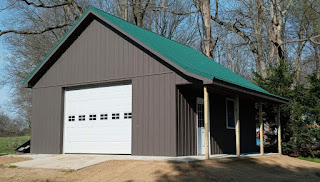The Ultimate Guide to Automatic Gate Repair
Welcome to our comprehensive guide on automatic gate repair. Automatic gates provide convenience, security, and aesthetic appeal to residential and commercial properties alike. However, like any mechanical system, they may encounter issues over time that require professional repair services. In this guide, we'll explore common automatic gate problems, troubleshooting tips, and the importance of hiring a qualified technician for repairs.
Understanding Automatic Gates
Automatic gates are sophisticated systems designed to open and close electronically, typically controlled by remote access, keypad entry, or sensors. These gates come in various styles, including sliding gates, swing gates, and barrier gates, catering to different property layouts and security needs.
Common Automatic Gate Issues
1. Electrical Malfunctions
Electrical malfunctions are a frequent issue with automatic gates, often stemming from power supply problems, wiring issues, or sensor failures. These issues can result in the gate failing to open or close properly, posing inconvenience and security risks.
2. Mechanical Wear and Tear
Continuous use and exposure to weather elements can lead to mechanical wear and tear, affecting the gate's performance over time. Components such as hinges, rollers, and tracks may require lubrication, adjustment, or replacement to ensure smooth operation.
3. Sensor Problems
Sensors play a crucial role in automatic gate operation, detecting obstacles and ensuring safe closure. Faulty sensors can lead to erratic gate behavior, including unexpected stops or collisions, posing safety hazards to pedestrians and vehicles.
4. Remote Control Issues
Remote control malfunctions are another common problem, preventing users from operating the gate remotely. This issue may arise from battery failure, signal interference, or programming errors, necessitating troubleshooting and reprogramming.
Troubleshooting Tips for Automatic Gate Owners
1. Check Power Supply
Start by verifying that the gate's power supply is functioning correctly. Ensure that the circuit breaker is not tripped and that all electrical connections are secure. If the gate is still unresponsive, consult a professional technician to inspect the electrical components thoroughly.
2. Inspect Mechanical Components
Inspect the gate's mechanical components for signs of wear and tear, such as rust, corrosion, or misalignment. Lubricate moving parts regularly to reduce friction and extend their lifespan. If any components appear damaged or malfunctioning, schedule repairs promptly to prevent further damage.
3. Test Sensors
Test the gate's sensors by triggering them with various objects to simulate obstacles. Ensure that the sensors detect the objects and prompt the gate to stop or reverse accordingly. If the sensors fail to function correctly, clean them thoroughly and adjust their positioning as needed.
4. Replace Remote Control Batteries
If the gate's remote control fails to operate, replace the batteries and test the device's functionality. Ensure that there are no obstructions blocking the signal between the remote control and the gate receiver. If the issue persists, reprogram the remote control or seek professional assistance.
Why Professional Repair Services Are Essential
While some automatic gate issues can be addressed through DIY troubleshooting, many require specialized knowledge and equipment to resolve effectively. Hiring a qualified technician for automatic gate repair offers several benefits, including:
Expertise: Professional technicians have the training and experience to diagnose and repair a wide range of automatic gate issues promptly.
Safety: Attempting to repair electrical or mechanical components without proper expertise can pose safety risks to individuals and property. Professional technicians adhere to safety protocols to ensure secure repairs.
Quality Workmanship: Professional repairs are conducted using high-quality parts and materials, ensuring long-lasting performance and reliability for your automatic gate system.

Comments
Post a Comment